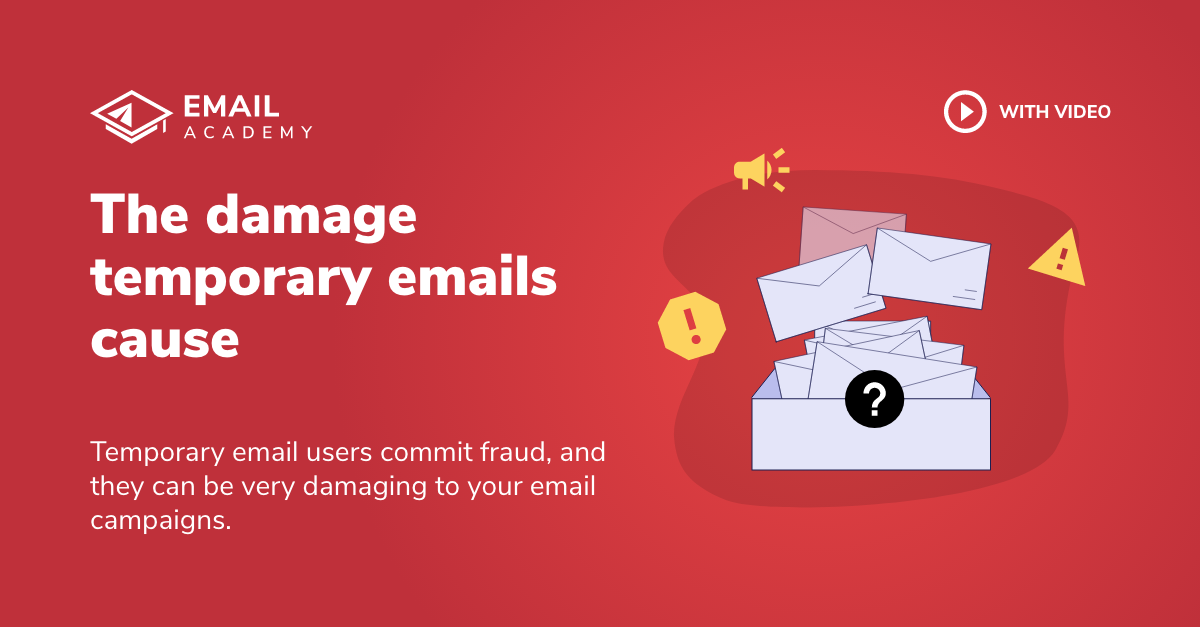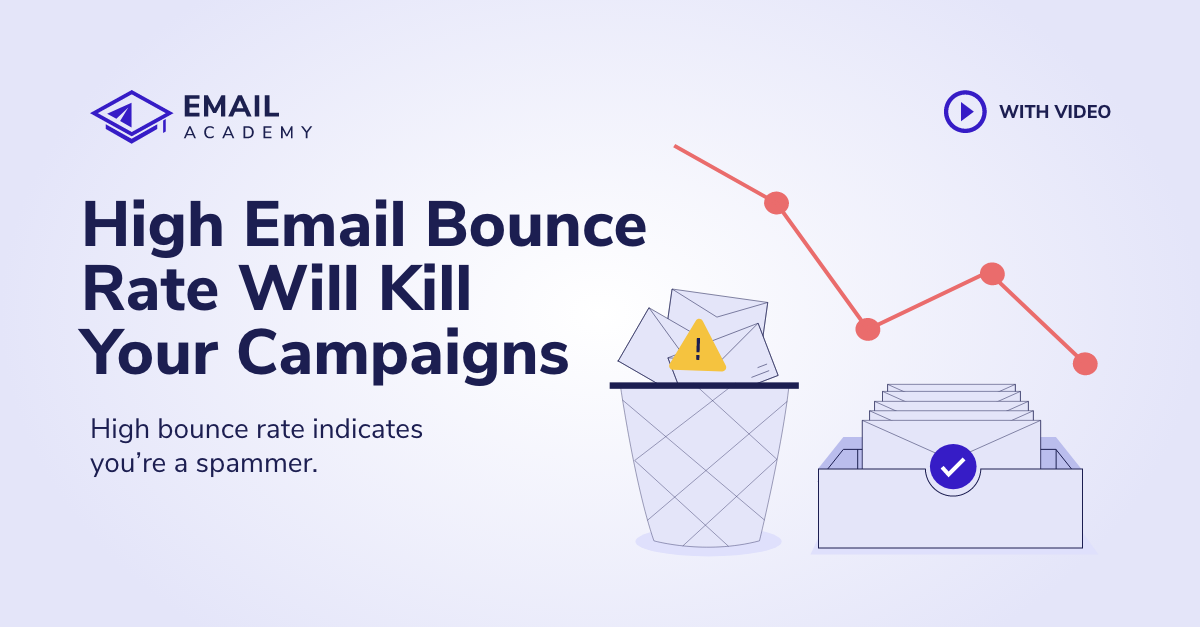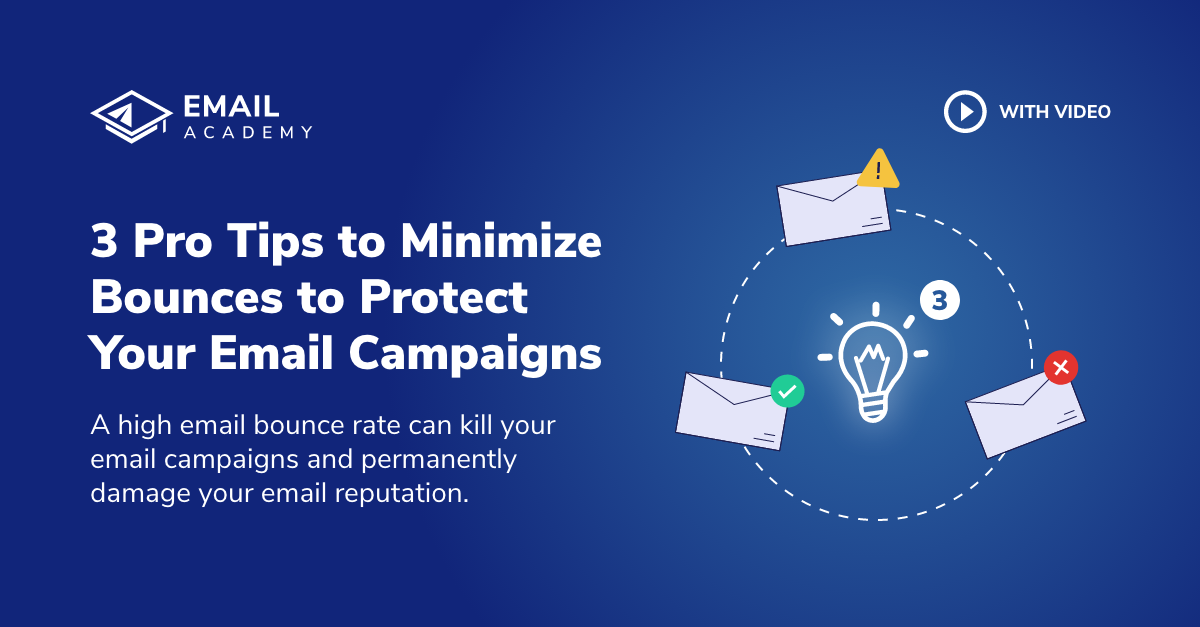The damage temporary emails cause
Courses: Email Bounce
Create: 1393 days ago
Update: 1118 days ago
Reading time: 4 min
Temporary (disposable) emails only exist for a short period of time (from 1 minute to 1 day), and they are primarily created to misuse businesses.
In this lesson, you will learn:
- What temporary (disposable) email are
- The main types of disposable email addresses
- Why disposable email addresses are used
- Why temporary email is so damaging to email marketing campaigns
- Why shouldn't we accept temporary emails
- How you can prevent damage from temporary emails
What is a temporary email?
Temporary or disposable email is a way for users to receive an email at an address that isn’t permanent or their primary email address – or rather, an account that holds no long-term value to its owner. It enables them to provide an email address (usually for verification purposes or to view content that requires contact information) without providing their legitimate account information.
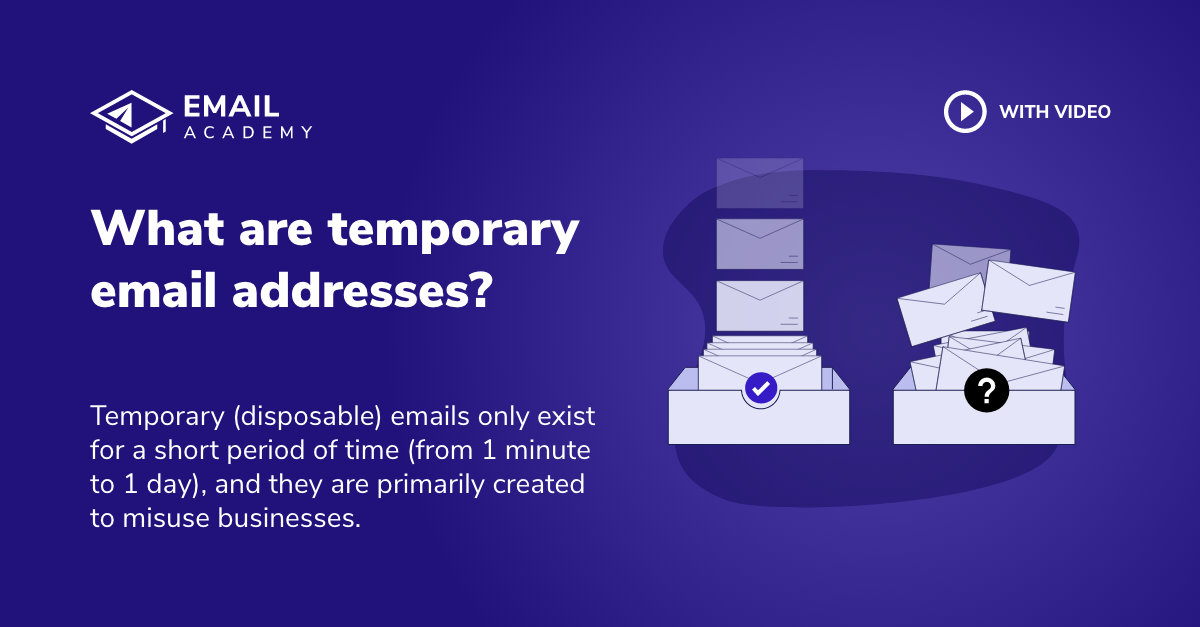
Today’s consumers of digital data are savvy, and many people use temporary, disposable, or even fake email addresses to register for websites, forums, and blogs.
Temporary email users calm their conscience, claiming they use these emails to prevent spam. These claims are false, all temporary email users commit fraud, and they can be very damaging to your email campaigns.
How do temporary emails work?
A disposable email account functions like a generic email account, with its inbox, reply, and forward functions, with the exception that they only exist for a very short period of time.
These types of email accounts are throwaway, one-time-use email addresses. They do not forward emails and generally expire after a certain amount of time. These accounts are responsible for very unreliable subscriber data, including highly skewed bounce rates.
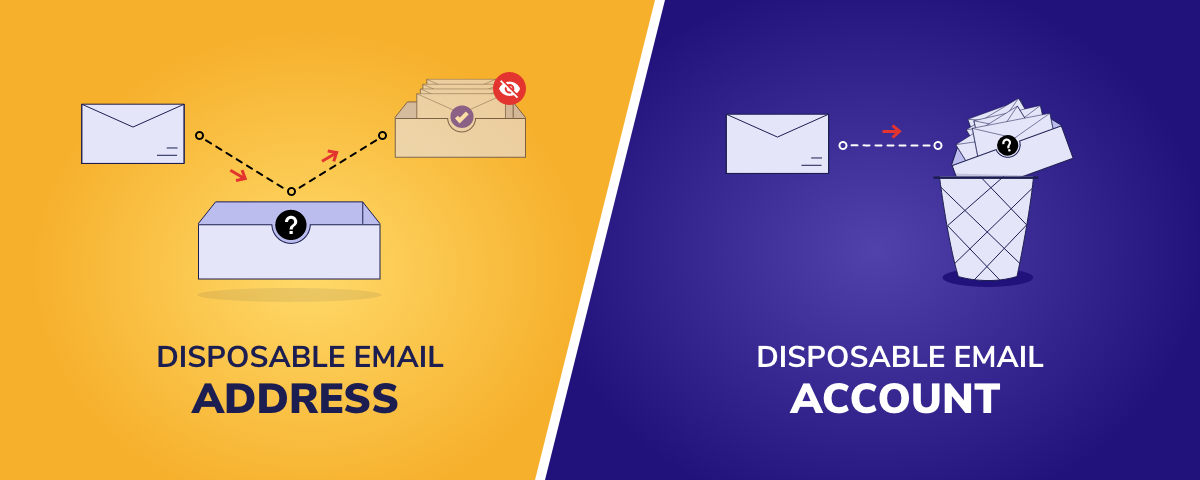
Why disposable emails are used?
People use temporary or disposable email addresses for many reasons. Still, generally, there’s one driving factor behind them all: people don’t want to provide accurate information when subscribing to a freemium service or downloading a PDF. They want to get stuff for free and pay with fake data.
Here are some common reasons people might use a temporary email address:
- Entering a promotion or contest
- Using a freemium service
- Downloading content, such as a whitepaper or PDF e-book
- Opening an account, such as a social media profile
- Wanting to hide their identity for malicious or fraudulent reasons, such as creating fake accounts
Affects of temporary emails for email marketers?
Email marketers are victims of fraud. They have given something away in exchange for fake details and marketers face enormous damage when sending emails to these accounts because they will not exist after the sign-up. This will cause a high bounce rate, decreasing inbox rate, and a high risk of account closures.
Here are some more specific ways that disposable and temporary emails can hurt your email marketing efforts:
- Your bounce rate will increase when emails are sent to temporary accounts that have expired.
- Your INBOX rate will drop due to the increasing
hard bounce rate
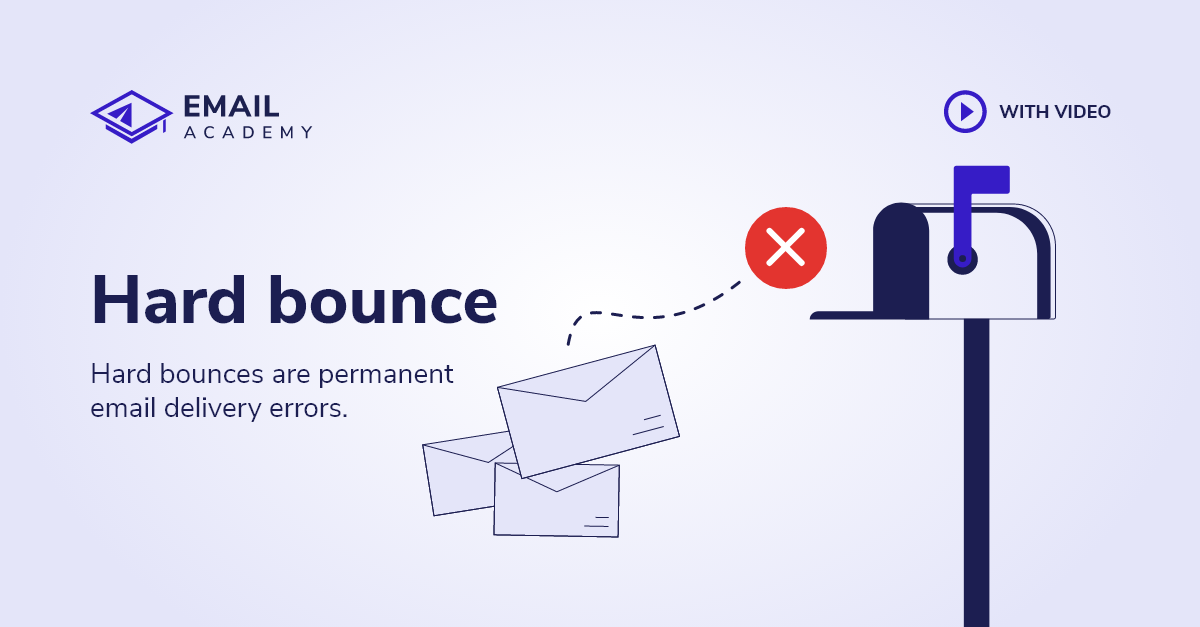 What is a hard bounce? | Hard bounce definition | EmailAcademy
Learn what hard bounces are on ©EmailAcademy, and what harm can it cause to your email campaign!
Read more »
.
What is a hard bounce? | Hard bounce definition | EmailAcademy
Learn what hard bounces are on ©EmailAcademy, and what harm can it cause to your email campaign!
Read more »
. - Your engagement rates will drop because most of your emails will go into spam folders.
- It screws your data and analytics
- It can get you marked as a spammer.
- Your email sending account can be closed.
You must not accept temporary emails
One of the most important reasons you want to avoid temporary or disposable emails is because it can affect your credibility as an email marketer. If it isn't already, the temporary and disposable email issue should always be on your radar – it can damage your trustworthiness as a sender and negatively impact metrics that matter, including your sender's reputation.
Too many hard bounces can put you at risk for bounce suspension or being penalized as spam, which can prevent you from delivering your emails to the legitimate users who do want to receive communications from you – and negatively affect your ROI.
Prevent the damage of temporary emails?
First, if you're dealing with a high number of disposable or temporary emails, it's essential to examine why and address the root causes.
You need to make sure you protect your brand and business from the damage temporary and disposable email can cause by taking the following steps:
- Identify temporary domains within email addresses and block any form submissions that contain them.
- Use an
email verification service
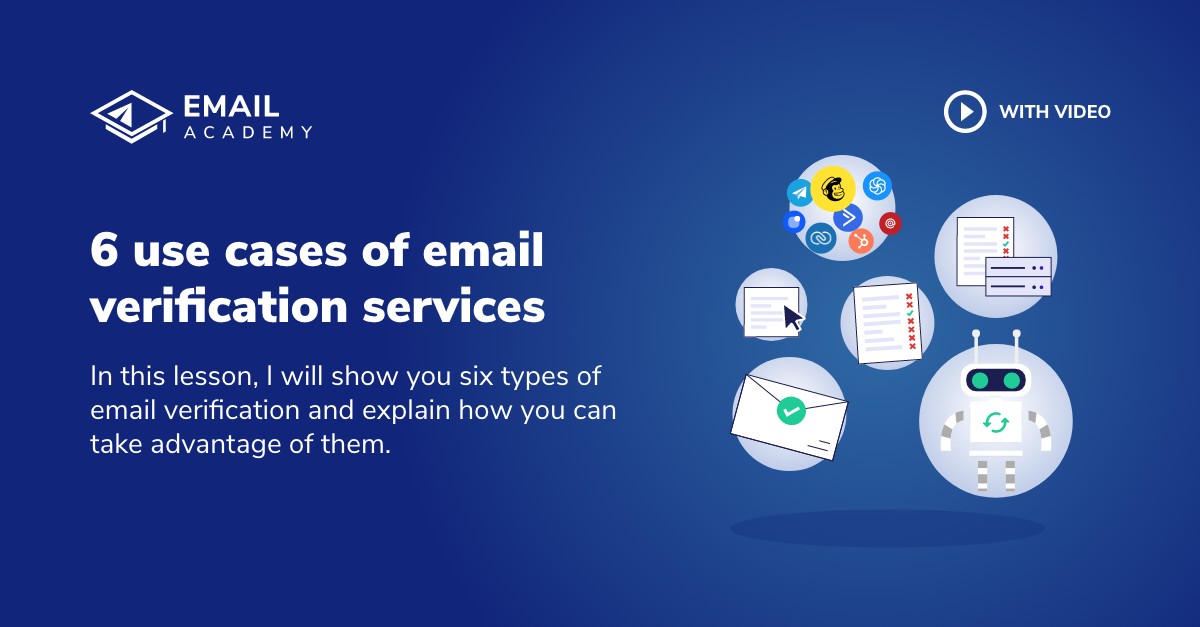 6 use cases of email verification services
6 use cases of email verification services
Read more »
to validate email addresses, ensuring that the email addresses are authentic and belong to real people. Email verification services can catch different red flags that may indicate whether an email is temporary or disposable, including checking for disposable email services and temporary domains.
6 use cases of email verification services
6 use cases of email verification services
Read more »
to validate email addresses, ensuring that the email addresses are authentic and belong to real people. Email verification services can catch different red flags that may indicate whether an email is temporary or disposable, including checking for disposable email services and temporary domains.
Eliminating the threat of disposable and temporary emails is key to maintaining a healthy sender score and a trustworthy reputation. Now that you better understand the threats these types of emails can pose to your marketing efforts, it's time to learn why investing in email verification services is crucial to protecting your brand and business.
Email verification to remove temporary emails from your lists
An email verification service can help you identify bad email addresses in your mailing lists and remove disposable emails. Email verification services, including EmailAcademy’s
Email Verifier
 Email Verification Service
Remove bad or risky emails from your email lists and avoid having any bad emails added to your email lists. Bad emails can damage your email reputation. Use EmailAcademy s Email Verifier to have good emails only.
Read more »
, helps you avoid temporary emails and these problematic accounts by:
Email Verification Service
Remove bad or risky emails from your email lists and avoid having any bad emails added to your email lists. Bad emails can damage your email reputation. Use EmailAcademy s Email Verifier to have good emails only.
Read more »
, helps you avoid temporary emails and these problematic accounts by:
- Uploading your existing contacts for review and removing any bad emails from your lists
- Offering an email verification API that can be integrated into any website and verify email addresses as people submit them in real-time
If you want to avoid the many headaches that temporary and disposable emails can cause for your campaigns, it’s smart to get ahead of the problem. Before you add a contact to your list, check it using a real-time email verifier API, and before sending out any emails, scrub your list by verifying it with a service like EmailAcademy’s
email verification
 Email Verification Service
Remove bad or risky emails from your email lists and avoid having any bad emails added to your email lists. Bad emails can damage your email reputation. Use EmailAcademy s Email Verifier to have good emails only.
Read more »
API or use our partner site MillionVerifier email verifier API.
Email Verification Service
Remove bad or risky emails from your email lists and avoid having any bad emails added to your email lists. Bad emails can damage your email reputation. Use EmailAcademy s Email Verifier to have good emails only.
Read more »
API or use our partner site MillionVerifier email verifier API.
Email verification to protect your reputation
In email marketing, your reputation is key for many reasons:
- If your list is filled with temporary and disposable email addresses, you will receive tons of hard bounces, negatively affecting your inbox rate and potentially getting your account marked as spam (or getting you
blacklisted
 Email, IP & Domain Blacklist Checker - 166 Blacklists in 5 Sec
Identify any email or IP blacklists you are listed on with EmailAcademy Email Blacklist Checker and get yourself removed to protect your email campaigns.
Read more »
altogether).
Email, IP & Domain Blacklist Checker - 166 Blacklists in 5 Sec
Identify any email or IP blacklists you are listed on with EmailAcademy Email Blacklist Checker and get yourself removed to protect your email campaigns.
Read more »
altogether). - Once you’re marked as spam, your ability to send emails is hampered – beginning the cycle all over again.
You can see how trust, reputation, and being careless with your email lists can land you in hot water – and a difficult cycle that’s hard to escape as an email marketer. By verifying emails and blocking disposable emails from the start, you can avoid marketing to shady accounts and malicious users, protecting your reputation (and your bottom line) in the process.
Maintain accurate data
Not only does email verification scrub these damaging accounts from your email list and helps protect your reputation and trustworthiness. It also helps you maintain accurate data so you can keep track of your campaigns – and get a real sense of their ROI.
